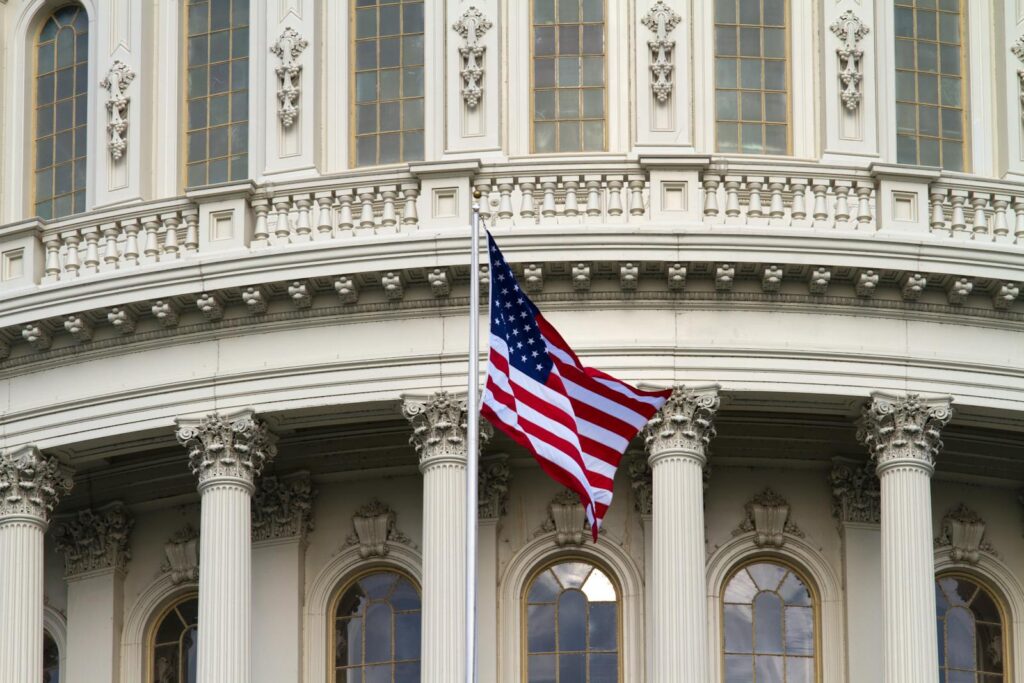Main Points:
- Bitcoin hits all-time high following Trump’s 2024 election win, reflecting strong market optimism.
- Trump’s pro-crypto stance, highlighted by a refusal to sell seized Bitcoin and possible SEC leadership changes, spurs investor confidence.
- Industry leaders like Ledger’s Seth Hertline view this as a “Crypto Election,” with PACs investing heavily in pro-crypto candidates.
- Ohio Senate race exemplifies crypto’s growing influence in U.S. politics, with pro-crypto Bernie Moreno defeating incumbent Sherrod Brown.
- Ledger VP foresees regulatory clarity boosting institutional and retail adoption in the crypto market.
A New Political Dawn for Cryptocurrency?
With Donald Trump’s recent victory in the 2024 U.S. presidential election, the cryptocurrency market has entered a period of unprecedented optimism and activity. Bitcoin and other cryptocurrencies have surged, setting new records in response to Trump’s policy proposals favoring the industry. Trump’s campaign promises to withhold from selling seized Bitcoin and to replace SEC Chairman Gary Gensler have generated a wave of confidence among investors and market participants. The crypto industry now looks toward a future with increased regulatory clarity and structural reforms.
Trump’s Pro-Crypto Stance and Its Implications for the Market
Trump’s support for cryptocurrency has been a defining aspect of his campaign. His statements about not liquidating government-held Bitcoin reserves and hinting at leadership changes in the SEC have sent a positive signal to the market. The Ledger executive Seth Hertline, in an interview with CNBC, noted that the post-election Bitcoin rally underscores the close relationship between regulatory policies and market reactions. He highlighted Trump’s pro-crypto allies, like J.D. Vance and Peter Thiel, who could influence the administration’s stance on digital assets.
Hertline remarked that the election represents a “crypto-first” moment, with unprecedented financial backing from crypto-focused PACs totaling over $245 million. Movements like Coinbase’s “Stand With Crypto” have empowered pro-crypto candidates, helping them secure key wins across the country, especially in Ohio.
Ohio Senate Race: A Case Study in Crypto’s Political Clout
One of the most notable outcomes of this election cycle is the Ohio Senate race, where pro-crypto Republican Bernie Moreno defeated long-time Democrat Sherrod Brown. This race not only highlighted the substantial influence of the crypto industry in politics but also illustrated how a candidate’s stance on digital assets can sway the electorate. Moreno, who has a background in blockchain technology, capitalized on growing support for crypto regulation, in contrast to Brown’s anti-crypto stance. Moreno’s campaign reportedly spent over $233 million, with significant backing from crypto-aligned groups like the Fairshake PAC, which contributed more than $40 million.
The financial support that Moreno received underscores the extent to which the crypto industry is willing to invest in political outcomes that favor its growth and adoption. Although Brown outspent Moreno outside of PAC funding, the results illustrate the potency of the crypto sector’s organized political involvement.
Surge in Crypto-Friendly Politicians in the U.S. Congress
The broader election results reflect a notable increase in crypto supporters within Congress. In the House, 258 pro-crypto candidates won their seats, outpacing those opposed to digital assets. Meanwhile, in the Senate, pro-crypto candidates now hold a majority of 17 seats to 12. This shift promises a more favorable legislative environment for cryptocurrency, potentially accelerating the industry’s expansion in the U.S.

Industry Leaders Eye Regulatory Clarity and Institutional Involvement
With Trump’s administration expected to bring personnel changes in major regulatory bodies like the SEC and CFTC, industry stakeholders anticipate significant regulatory reforms. Ledger’s Hertline believes these changes could encourage institutional investors to enter the crypto market. He sees stablecoin regulations and clear guidelines for crypto exchanges as priorities for the new Congress. Although previous legislative efforts have made progress, the current momentum suggests that comprehensive reforms could soon be within reach.
Hertline also highlighted the growing demand for self-custody wallets, particularly as regulatory clarity emerges and institutional interest increases. He emphasized that Trump’s administration could further legitimize the role of crypto as an asset class, boosting adoption among both institutional and retail investors.
The Importance of Self-Custody and Security in the Evolving Market
As the crypto market gains legitimacy, the demand for secure and self-custody options has risen. Ledger anticipates growth in its institutional security solutions, alongside increased interest in self-custody wallets among individual investors. In light of the current administration’s expected regulatory stance, many investors are rethinking the importance of controlling their assets directly, avoiding the vulnerabilities associated with custodial platforms. Hertline asserts that this trend will likely continue, as regulatory clarity enhances investor confidence and asset protection becomes paramount.
A Pivotal Moment for Crypto in U.S. Politics and Markets
The 2024 election and Trump’s victory mark a pivotal moment for the cryptocurrency market. With the prospect of pro-crypto policies and regulatory reforms, the industry is set to witness significant growth. The support from political leaders and legislative backing promises a more stable environment, attracting both retail and institutional investors. As the regulatory landscape matures, companies like Ledger are positioned to meet the rising demand for secure, self-custody solutions, ensuring that investors can engage with the market confidently.
The crypto sector has transitioned from being a speculative investment to a politically influential asset class with long-term potential. With new political allies and anticipated regulatory clarity, the future of cryptocurrency in the United States looks brighter than ever.


